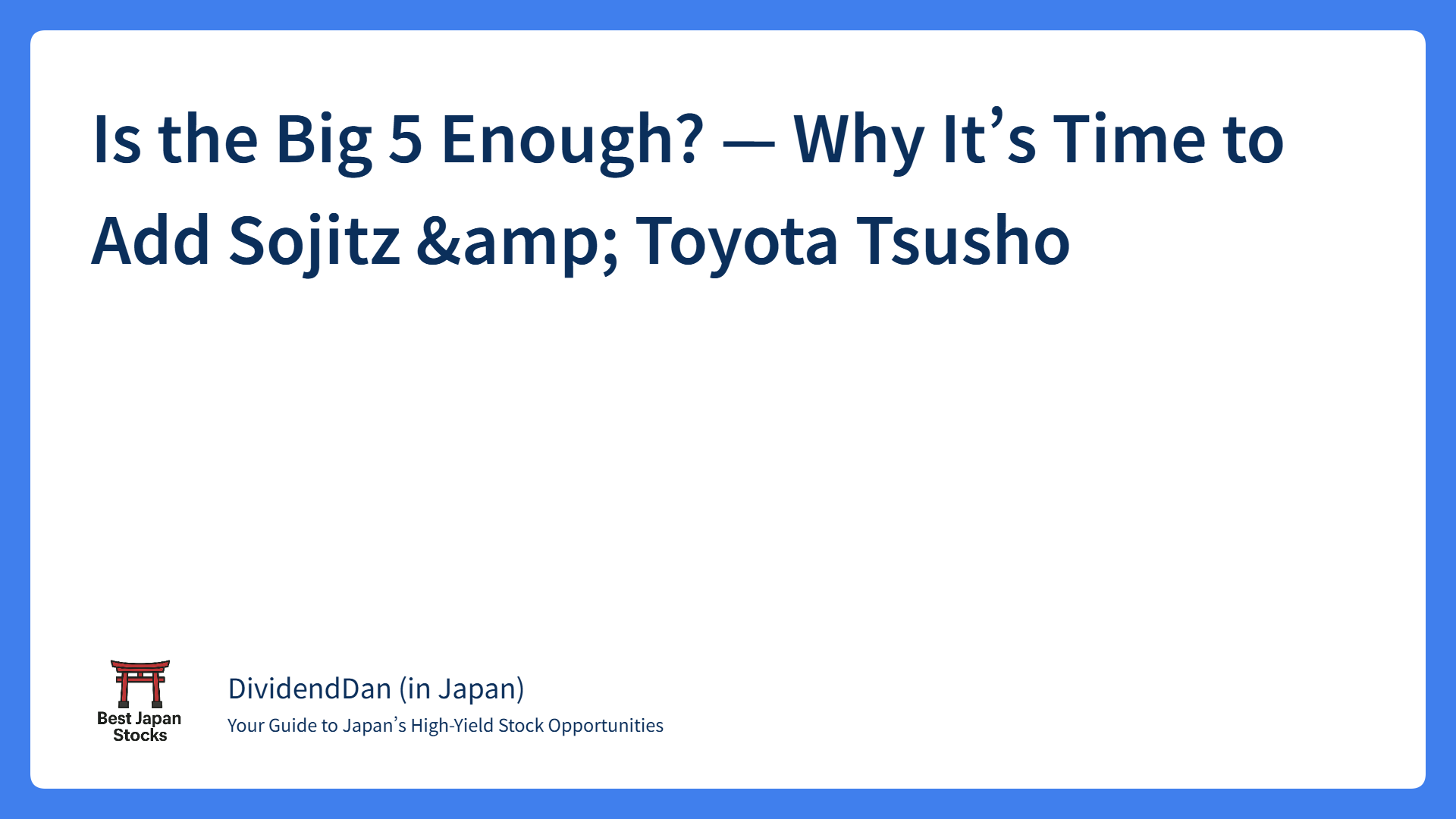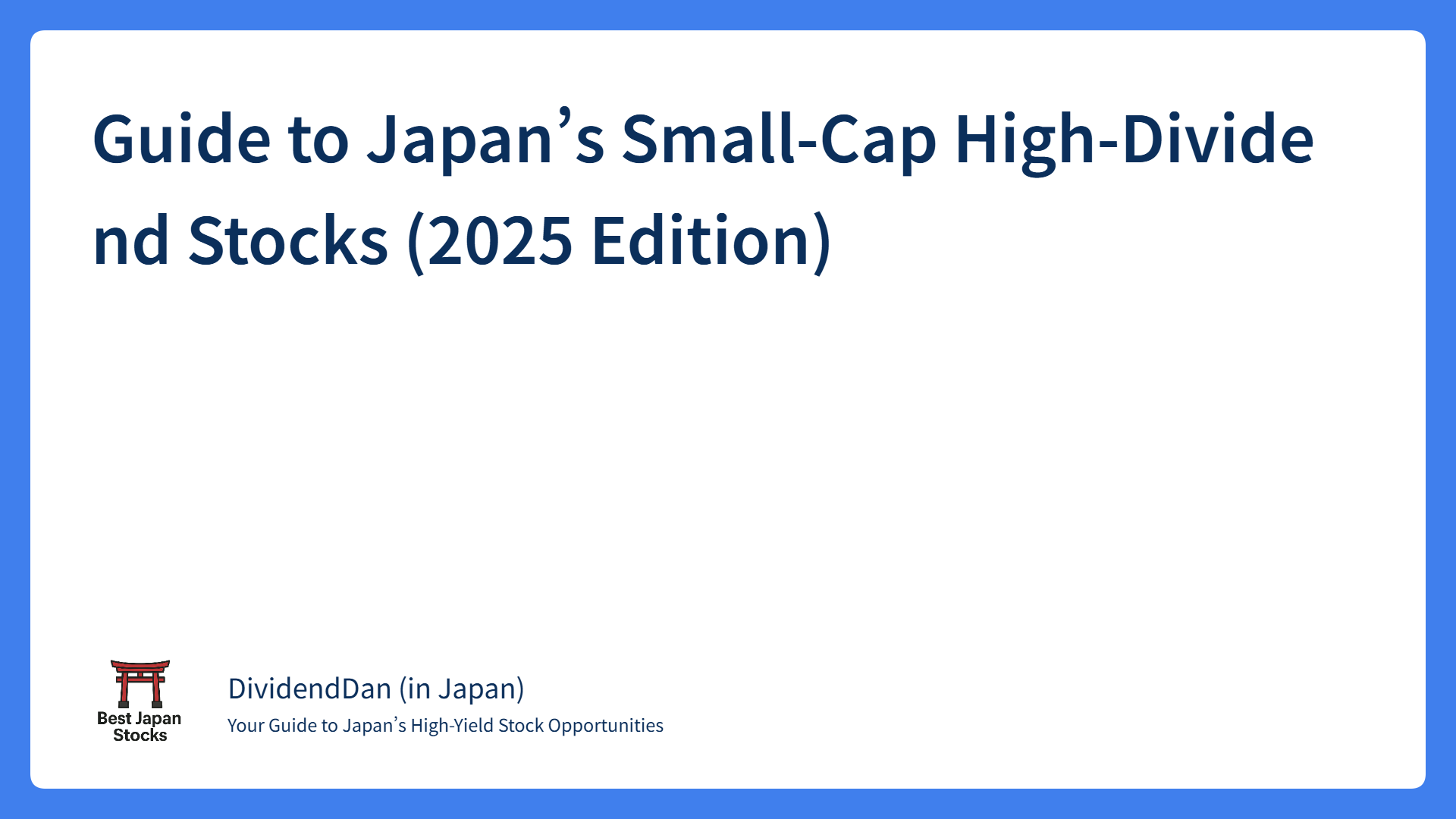Mitsubishi Corporation (8058) — High‑Dividend Stock Investment Report
1. Summary: Is the Stock Cheap or Expensive Right Now?
Conclusion: At the current price, the stock sits in a “cheap zone,” with a 3.8 % forward yield and a PBR of 1.08 ×, both below its historical averages.
- Share price: ¥2,874.5 at the close on 6 Jun 2025 (–15 % from the March high)
- Dividend: Forecast ¥110, marking 11 consecutive years of increases
- Dividend yield: 3.8 % at today’s price; a 4 % yield would be reached at roughly ¥2,750
- Shareholder returns: Total payout ratio of 40 % plus a buy‑back program of up to ¥1 trillion
- Valuation: PBR 1.08 ×; hidden value in resource interests and equity holdings implies the stock is still cheap on a look‑through basis
- Growth investment: Plans to grow base operating cash flow by 10 % per year, with an emphasis on non‑resource areas
2. Company Overview: What Does the Company Do?
Conclusion: A global trading house that earns cash in resources and reinvests it in non‑resource growth, leveraging a powerful circular business model.
- Profile & scale: Founded in 1950, headquartered in Marunouchi, Tokyo; listed on the TSE Prime. FY Mar 2025 revenue was ¥18.6 trn and pretax profit ¥1.39 trn, up 2 % YoY; ROE remains in double digits.
- Circular investment model: About 40 % of profit comes from metals and LNG; that cash is recycled into fast‑growing non‑resource areas such as renewables, DX, urban development and food, balancing long‑term growth with portfolio stability.
- Portfolio & edge: FY Mar 2025 pretax profit mix—Metals 27 %, LNG 12 %, Automobiles 14 %, Industrial Infrastructure 11 %, Food 11 %, etc. Mitsubishi combines world‑class mines, LNG interests and logistics assets with the Mitsubishi Group’s financial muscle to win large‑scale projects worldwide; overseas sales make up 55 % of the total.
- Governance, talent, brand: Trust banks and global institutions dominate the share register; management targets ROE > 12 % and is highly conscious of capital cost. The company offers high pay and responsibility, with ample overseas postings and M&A exposure—albeit sometimes at the cost of long hours. The 150‑year Mitsubishi brand drives partner trust and deal flow.
3. Share‑Price Trend: How Has the Market Reacted?
Conclusion: The stock has trended upward on resource strength and shareholder returns, but recent consolidation leaves it undervalued.
- Five‑year chart: +110 % from ¥1,370 (Jun 2019) to ¥2,874 (Jun 2025); spiked during the 2022 resource boom, hitting an all‑time high of ¥3,412 in Mar 2024.
- Key events:
- May 2023 — Announced up to ¥1 trn buy‑back → +6 % same day
- Mar 2024 — Announced hike to ¥110 annual dividend → +4 % next day
- Volatility: Five‑year beta 1.14, slightly above TOPIX; resource linkage drives sensitivity.
- Current level: ¥2,874 is –16 % from the 52‑week high (¥3,412) and +22 % from the low (¥2,362).
4. Growth Potential and Risks: Is the Future Promising?
Conclusion: Large‑scale investments in renewables and circular businesses bode well for long‑term growth, but the biggest threats are resource‑price swings and geopolitics.
- Midterm Plan 2027:
- Base operating cash flow: ¥700 bn → ¥1 tn annually
- EBITDA target: ¥2 tn by FY 2027
- ROE: keep above 12 %
- Investment budget: ¥3.2 tn over three years, 70 % to non‑resource areas
- Growth drivers:
- Renewables: Solar & wind in North America/Asia; green‑hydrogen pilots
- EV value chain: Expanding nickel & lithium interests in Australia
- Food & healthcare: M&A in frozen foods and medical supply chains
- Digital solutions: SaaS and logistics DX via Mitsubishi Corporation Digital
- Risks:
- Resource slump: About 40 % of pretax profit is resource‑linked; ±¥1 in WTI moves op‑profit by ≈¥2 bn
- Geopolitics / sanctions: Russian LNG and Middle‑East assets
- FX: Every ¥10 JPY‑strength hurts net profit by ~¥25 bn
- Decarbonization: Coal‑power assets risk becoming stranded
- Mitigations: Shift portfolio to 70 % non‑resource, control OPEX, use derivatives; integrate TCFD/ISSB metrics and internal carbon pricing.
5. Dividends and PBR: How Are Returns Delivered to Shareholders?
Conclusion: A progressive dividend policy and flexible buy‑backs keep the total payout ratio above 40 %, underscoring a shareholder‑friendly stance.
- Dividend policy: “No downward revisions” progressive policy since 2021; medium‑term goal of >40 % total payout.
- Dividend track record:
- FY 2021 ¥80 → FY 2022 ¥90 → FY 2023 ¥100 → FY 2024 ¥106 → FY 2025e ¥110 (four‑year CAGR +8.3 %; uninterrupted increases)
- Share buy‑backs: ¥500 bn announced May 2023; another ¥500 bn Aug 2024; up to ¥1 trn in total (≈10 % of shares).
- PBR snapshot: BPS ¥2,650 vs. price ¥2,874 ⇒ 1.08 ×.
- Asset mix: Cash 19 %, Resource interests 27 %, Equity stakes 18 %, Goodwill 6 %, Other fixed assets 30 %. Mark‑to‑market suggests an effective PBR near 0.9 ×.
- Capital reform: Introduced “MC Shared Value” ROIC framework in FY 2023 to speed asset rotation and disposals.
6. Note for Overseas Investors
Key Takeaways for Non‑Japanese Shareholders
- Valuation Gap – Even after the recent rally, Mitsubishi trades at just 1.08 × book (≈0.9 × mark‑to‑market). Management aims to narrow the gap through higher ROE and aggressive buy‑backs.
- No Shareholder Perks (Yutai) – Returns are cash only (dividends + buy‑backs), so foreigners do not miss coupon‑style perks.
- English Disclosure – Full annuals, quarterlies and IR decks are in English; some subsidiary data is Japanese‑only.
- Tax Withholding – Japan withholds 15.315 % on dividends for treaty countries (e.g., U.S.). Check foreign‑tax‑credit rules.
- Liquidity – The ADR (MSBHF) is thin; Tokyo shares (8058.T) offer deeper liquidity and tighter spreads.
Disclaimer
This article is intended solely for informational purposes based on publicly available data and the author’s personal opinions. It does not constitute investment advice or a solicitation to buy or sell any securities. Readers should make investment decisions at their own discretion and consult with licensed professionals if necessary. While we strive for accuracy, we cannot guarantee the completeness or timeliness of any information presented herein. Figures and information may change over time.



